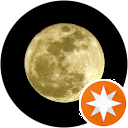Mount Kilimanjaro National Park- Travel Tips
What to See, How to Plan & Tours- Natural Scenery
- 5 Reviews
Mount Kilimanjaro National Park: essential guide for first-time visitors
Mount Kilimanjaro National Park crowns Africa with its snow-topped summit, an isolated volcanic massif that rises to Uhuru Peak (≈5,895 m) and draws trekkers from around the world. The park—managed by the Tanzania National Parks Authority—includes the mountain’s montane forest belt and alpine zones and is protected as a UNESCO World Heritage Site for its exceptional natural values.
Why this park is unique
Kilimanjaro is the world’s largest freestanding volcanic massif and displays five clear vegetation zones as elevation increases — from cultivated lower slopes and dense montane forest to heath and moorland, alpine desert and the glaciated summit. These rapid ecological shifts make a Kilimanjaro trek both a dramatic natural spectacle and a study in altitude-driven habitat change.
Plan your climb: routes, time and acclimatization
Choosing the best route to climb Mount Kilimanjaro for acclimatization is the single most important planning decision. Popular options include:
- Lemosho / Lemosho-to-Machame — highly recommended for scenery and gradual ascent profiles (better acclimatization).
- Machame (Scenic Route) — very popular; high success rates with 7–8 day itineraries.
- Rongai — approaches from the north; drier and less crowded.
- Marangu — the “Coca-Cola” route with hut accommodation; shorter but steeper in places.
Longer itineraries (7–9 days) improve summit success by allowing more gradual ascent and safer acclimatization. Guide companies and route descriptions on travel guides and park pages provide detailed comparisons.
Permits, fees & the booking process
Before you go, you must secure park entry and climbing permits through TANAPA or an authorised operator. For specifics on Kilimanjaro National Park permit fees and booking process, consult the official TANAPA page or a licensed operator; fees, booking windows and group paperwork are managed centrally by park authorities. (Operators typically include permit processing in trip quotes.)
When to go & what to pack
- Best seasons: Dry months (January–March and June–October) offer more stable summit weather and clearer views. Shoulder seasons can work but expect more variable conditions.
- Clothing & equipment: Layering is essential — lightweight base layers for lower zones, insulated layers for summit night, a good sleeping bag rated for -10°C or lower, sturdy boots, trekking poles, and peak-rated headlamp. Portable water purification and altitude medication (as advised by your physician) are common recommendations from guides and travel sites.
What you’ll experience on the mountain
Expect dramatic landscape changes on a single climb: moss-draped montane forest frequented by blue monkeys and colobus at lower elevations; fragile moorland with giant lobelias and senecios at mid-altitude; sparse alpine desert above ~4,000 m; and the final glaciated, wind-scoured ascent to the crater rim. This variety is a major reason Kilimanjaro is listed by UNESCO.
Responsible travel & conservation
Kilimanjaro faces conservation challenges including retreating glaciers and pressures from tourism on lower-slope communities and habitats. Choose operators who follow TANAPA rules, treat porters ethically, pack out waste and contribute to local communities. Supporting certified local guides and fair-wage porter practices helps ensure the park remains both protected and beneficial to surrounding livelihoods.
Quick checklist before you book
- Confirm route and realistic itinerary length (aim for 7–9 days for best acclimatization).
- Verify that permits and park fees are included in your operator quote.
- Check guide/porter ethics and insurance provisions.
- Prepare with cardio and altitude-compatible training, and consult a travel health clinic about altitude readiness.
Attractions in Tanzania
- 1
- 2
- 3
- 4
- 11
Reviews of Kilimanjaro
 praygod lyaro
praygod lyaro - 5
Nice , cool and conserved place, for hikking annd climbing, picnic and other recreation activities
 Akshaya Bhagavathula
Akshaya Bhagavathula - 5
Climbing Mount Kilimanjaro was an experience that reshaped my understanding of both nature and my own personal limits. It’s not just a mountain; it’s a journey through a variety of ecosystems, each with its own unique challenges and beauties. Starting from the lush rainforests at the base, the hike began with the sound of birds and the occasional monkey sighting. The dense canopy overhead provided a cool shade, a sharp contrast to what awaited above. As we ascended, the vegetation thinned, and the trail led us through heath and moorland, where the giant lobelias and groundsel plants seemed to belong to a different world altogether. Reaching the alpine desert was surreal. The landscape became stark with wide-open skies and a vast expanse of rocky terrain. During this part of the climb, the full impact of the altitude hit me. Each step required effort, and the nights were biting cold. However, the clear night skies filled with stars made the harsh conditions worthwhile. The final ascent to Uhuru Peak began in the early hours of the morning, aimed at reaching the summit for sunrise. This was by far the most challenging part, both physically and mentally. The steep, rocky path, coupled with the thinning air, tested every reserve of energy I had. But the sight of the sun rising over the vast African landscape from the highest point in Africa was indescribable. It was a moment of pure elation and accomplishment. Descending the mountain, I felt a mix of relief and nostalgia, knowing that the unique environments and the sheer physical challenge of Kilimanjaro were once-in-a-lifetime experiences. Each campsite on the way down offered a moment to reflect on the journey and the diverse beauty of Kilimanjaro’s landscapes. Climbing Kilimanjaro is more than a tick on a bucket list; it’s a profound journey that challenges the body and invigorates the soul. The sense of community among climbers and the shared determination to reach the summit adds to the richness of the experience. It’s an adventure that I would recommend to anyone seeking a deep connection with nature and themselves.
 I P
I P - 5
Such a beautifull and interesting place. Different landscape depending on the altitude. Coca-Cola rout.
 canyoudoanybetter
canyoudoanybetter - 5
A beast of a mountain and difficult to climb. Trails are rough and when oxygen starts getting thin walking becomes stressful. Everyone reacts differently at altitude. Great views, long hiking days! Pole! Pole! Enjoy every difficult step, mud unlike anything I’ve ever seen in the rainforest, unbelievable porters carrying everything including a toilet and tent. And when you have diarrhea in the middle of the night you’ll be damm glad there is a toilet. Loud monkey noises above your tents the first night sounded like something out of Star Wars! You could be at Disney World spinning in a plastic tea cup! You choose Kilimanjaro! Good choice, this is real living, whether you summit or not, doesn’t matter. Everything and everyone on this trek is unbelievable! Wow! It’s great to be alive! Thank you Africa and Mt. Kili!
 Cheruyot Patrick
Cheruyot Patrick - 5
Kilimanjaro is very popular with both experienced hikers and first time trekkers because it is considered to be the easiest of the seven summits. It is the largest free-standing mountain rise in the world, meaning it is not part of a mountain range.



